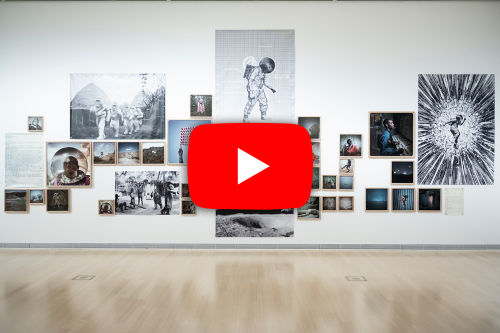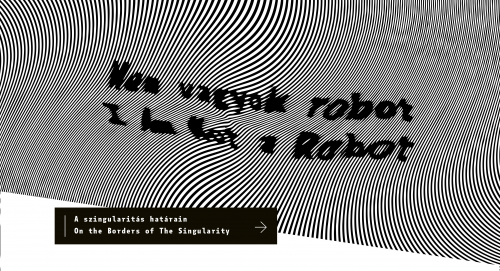One of the defining global phenomena of our time is digitalisation, which has transformed human life in an evolutionary leap over the past decades, rewriting centuries of fixed habits, forms and behavioural patterns. Featuring international and Hungarian artists, the exhibition explores the idea of what happens when we have reached the singularity, a point in technological development that exceeds human capabilities.
Our lives are moving inexorably from offline to online, with digital presence growing rapidly. It is no exaggeration to say that this post-human transformation is affecting fundamental aspects of human existence: our personal and business lives, education, communication, and time management. It is possible that, in the historic process of digital transformation that is currently taking place, humanity is – unknowingly – moving into a new world order, where digital technology is the new normativity that becomes part of work and life: not an enemy, not a friend, but a natural part of existence.
The exhibition attempts to interpret eight themes grouped around the central concept of artificial intelligence. Several artworks explore the phenomena of alternative facts, fake news and deepfake at the intersection of digital technology and media. Technology has paved the way for an unprecedented pace of change in body image: our mobile and computer screens, and even our mental maps, are dominated by selfies and video game characters. The exhibition also presents some speculative visions of the future of digital nature, of the possible coexistence and communication between man and robot, man and AI. It is important to emphasise the aspects of the living environment and sustainability in relation to the use of digital infrastructure, as the hardware and electricity required to support our data traffic, though invisible to us, leaves a huge ecological footprint, and the increasingly scarce availability of raw materials for hardware is pushing designers towards biotechnology. There is also scope for approaches that seek to hack or eliminate the use of technology. And a wide range of digital detox tools can help to balance digital presence with real experiences and emotions.
The opening will feature a performance by contemporary visual artists Neil HARBISSON and Pol LOMBARTE, who live with artificial intelligence built into their bodies like cyborgs, and will give an insight into this experience of coexistence.
Details of the accompanying programmes and the digital catalogue of the exhibition are available on the website.
EXHIBITED ARTISTS
Memo AKTEN, BarabásiLab, Aram BARTHOLL, Katriona BEALES, BINAURA (NAGY Ágoston & SAMU Bence), BIRKÁS Mona, BIRÓ Dávid, Zach BLAS & Jemima WYMAN, James BRIDLE, Arvida BYSTRÖM, Juan COVELLI, Jake ELWES, FÜLÖP Szabolcs, Fabien GIRAUD & Raphaël SIBONI, Neil HARBISSON & Pol LOMBARTE, Daniel HEISS, Vladan JOLER & Kate CRAWFORD, KÚTVÖLGYI-SZABÓ Áron, Lawrence LEK, Cristina DE MIDDEL, Joana MOLL, PÁLL Tamás, Wilfredo PRIETO, SoniLab (Marco Buongiorno Nardelli), ZÁMORI Eszter
Curators: KÉSZMAN József, MAJ Ajna, NOLASCO-RÓZSÁS Lívia, ÜVEGES Krisztina
To view or download the exhibition booklet, please CLICK HERE.
The exhibition is part of the Liszt Fest.

























